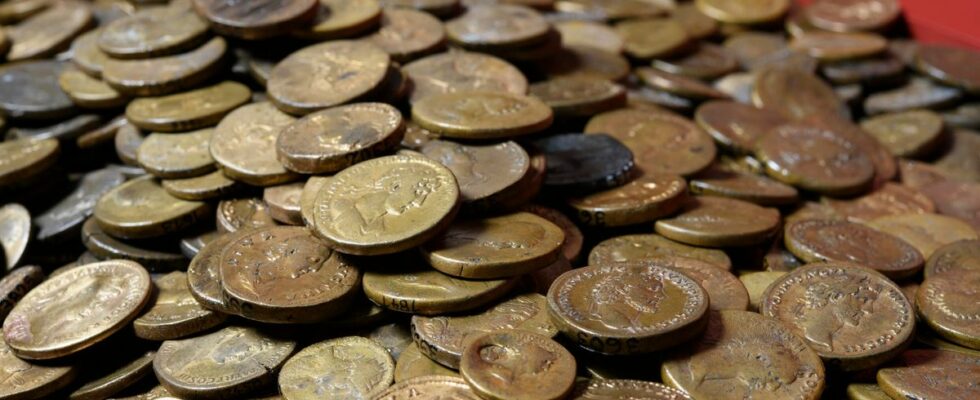If you want to contemplate an ancient goldmine “in real life”, it is now possible at Aquitaine museum. The establishment has made a special place for the “treasure of the Garonne” which dates from the 2nd century, discovered by chance during dredging work on the river in the 1960s. “With 4,000 coins, it is the most important monetary treasure antique, in France,” notes Laurent Védrine, director of the Aquitaine museum.
Without the dredging operations of the river to extract aggregate, the loot might have remained submerged under water. It still took a few decades to collect the thousands of sesterces, this Roman brass coin.
Pieces found in the walls of houses
During the discovery, some people used it, but there are also pieces “which remained in the sand extracted from the Garonne”, points out the director of the museum. Some ended up in the walls of constructions carried out in Bordeaux and the surrounding area. When the owners come across them during work, for example, some then drop them off at the Aquitaine Museum. The university has recently sold more than 200 pieces to the museum, which also still receives deposits from individuals, again this Thursday morning.
“This treasure is an opportunity to discuss the trade of Burdigala [le nom antique de Bordeaux] great Roman trading port, located at the western limit of the Roman Empire and to measure the importance of the river in trade and communications”, comments Laurent Védrine. The coins belong to the reign of different emperors (Hadrian, Trajan, Commodus) and the size of the coins and their designs allow numismatists (currency specialists) to distinguish them.
At the time, the value of the 4,000 pieces was equivalent to 25 amphorae of wine, but its heritage and historical value is inestimable today.

